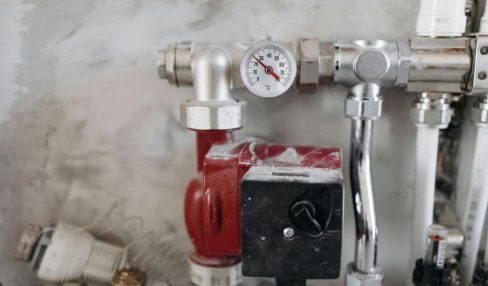Case Study: Reducing No-Shows with Virtual Support
14 April 2025
5 Mins Read

toc impalement
The healthcare industry is among the most sustainable industries in which to run a business. However, despite the opportunities, some challenges present themselves in ways that can hinder operations.
One of those big challenges is patient no shows. Patients constantly missing their appointments can compile and multiply at a rapid rate. It can result in inconveniences, time wasted and affected operations.
As these inconveniences keep growing, it can lead to missed revenues. Most businesses often struggle to find solutions to these challenges.
However, just like problems, opportunities also present themselves. With VR technologies, the healthcare industry can deploy virtual medical assistants, solving the problem of no shows.
Here’s a case study on how the healthcare industry can reduce patient no shows.
Why it’s Important to Reduce Patient No Shows

No show issues has become a persistent issue in the healthcare industry. Healthcare providers struggle to reduce patient no shows because of patients not following their appointment date and time.
A few common reasons include the following –
- Patients rescheduling their appointments.
- Failing to meet their appointment.
- Transportation issues affect the time they spend reporting at the doctor’s chamber.
- Lack of perceived urgency to check their health.
The consequences of no shows are particularly constantly damaging the financial and operational side. In fact, the industry is losing billions of dollars every year due to an increasing number of patient no shows.
However, there were several practices to reduce this significant loss. Text reminders, phone call reminders, and notifications through appointment apps are common yet not always effective.
However, patients may ignore those reminders. That’s where virtual assistants can be of significant help.
The Case Study: Implementing Virtual Support
Implementing virtual support to reduce patient no shows can have significant benefits for a healthcare company.
We have some tips that mid-sized healthcare facilities are using to reduce a high rate of patient no shows.
To illustrate the benefits of a medical virtual assistant in reducing no shows, let us explore the experience of a mid-sized healthcare facility that decided to implement this technology as part of their patient management system.
The facility was experiencing a high and growing rate of patient no shows, which was impacting its revenue and operational efficiency. After struggling with traditional appointment reminder methods, it chose a medical health virtual assistant to resolve the issue.
Step 1: Identifying the Need
The healthcare facility began by analyzing its existing appointment system. The facility had discovered that the no show rate at their tracker was more than 20%, going beyond the red line standards of the industry.
It had them making reminder calls to the patients. Most of those efforts were unanswered or ignored. The reason could be –
- The patients do not want to reschedule.
- They also may not know how to reschedule it.
Realizing the need for a more efficient system, the facility’s leadership team explored the possibility of using a medical virtual assistant to handle some of the more time-consuming tasks, including appointment reminders, rescheduling, and answering patient queries.
When time-consuming processes are already identified, the facility knows how to reduce patient no shows.
Step 2: Integrating the Virtual Assistant
The healthcare facility had a medical virtual assistant, the sole purpose of which is to work for the healthcare environment.
The virtual assistant worked as an integrated system with the existing scheduling system of the patient’s database. It ensured that this process could access and manage appointment information in real time.
The virtual assistant was programmed to handle various tasks, including
- Sending personalized appointment reminders via text message or email
- Allowing patients to reschedule or cancel appointments directly through the assistant
- Providing patients with information about their upcoming appointments, including location, time, and any required preparations
- Offering assistance with answering frequently asked questions about the facility’s services and procedures
The medical virtual assistant was designed to communicate in a friendly, professional tone, ensuring that patients felt engaged and supported. It also allowed for two-way communication, meaning patients could respond to reminders and request assistance as needed.
Step 3: Monitoring and Adjusting the System
After implementing the virtual assistant, the healthcare facility began tracking its effectiveness. The facility’s leadership team paid close attention to the no-show rate, patient feedback, and the overall efficiency of the scheduling process.
Over the first few months, the results were significant. The no-show rate dropped by more than 15%, a notable reduction that had a direct impact on the facility’s revenue.
Patients appreciated the convenience of receiving personalized reminders and the ability to easily reschedule appointments through the virtual assistant.
Additionally, the virtual assistant’s proactive communication with patients who were at risk of missing appointments helped ensure that they attended their scheduled appointments.
The facility also received positive feedback from staff members, who reported feeling less stressed about appointment reminders and cancellations.
The virtual assistant took over many of the routine administrative tasks, freeing up staff to focus on more important aspects of patient care.
Step 4: Evaluating Long-Term Benefits
When the system started to function without internal or external frictions, the healthcare facility started to check the long term benefits adding virtual assistants to the system has. Some of the findings were –
- The patients appreciated the convenience and the support which the new VR assistant provided them with.
- The leadership team also pointed out that the medical virtual assistant helps easily derive valuable insight from the patient behavior.
- They could utilize the trends and patterns from patient’s engagement with the facility through VR support.
For example, the facility could identify patients who had a history of missed appointments and offer them tailored support to reduce the likelihood of future no shows.
So, Does VR Support Reduce Patient No Shows?
Implementing a medical virtual assistant in the healthcare facility proved to be a successful strategy in reducing no shows. This technology-driven approach uses strategies like personalized communication, proactive reminders, and easy and seamless rescheduling options.
In short, VR support works like a double-edged solution, impacting operations and revenue on the business side while improving customer experience. The effort to reduce customer no shows here is ultimately transforming the healthcare business aside from reducing no shows.

















